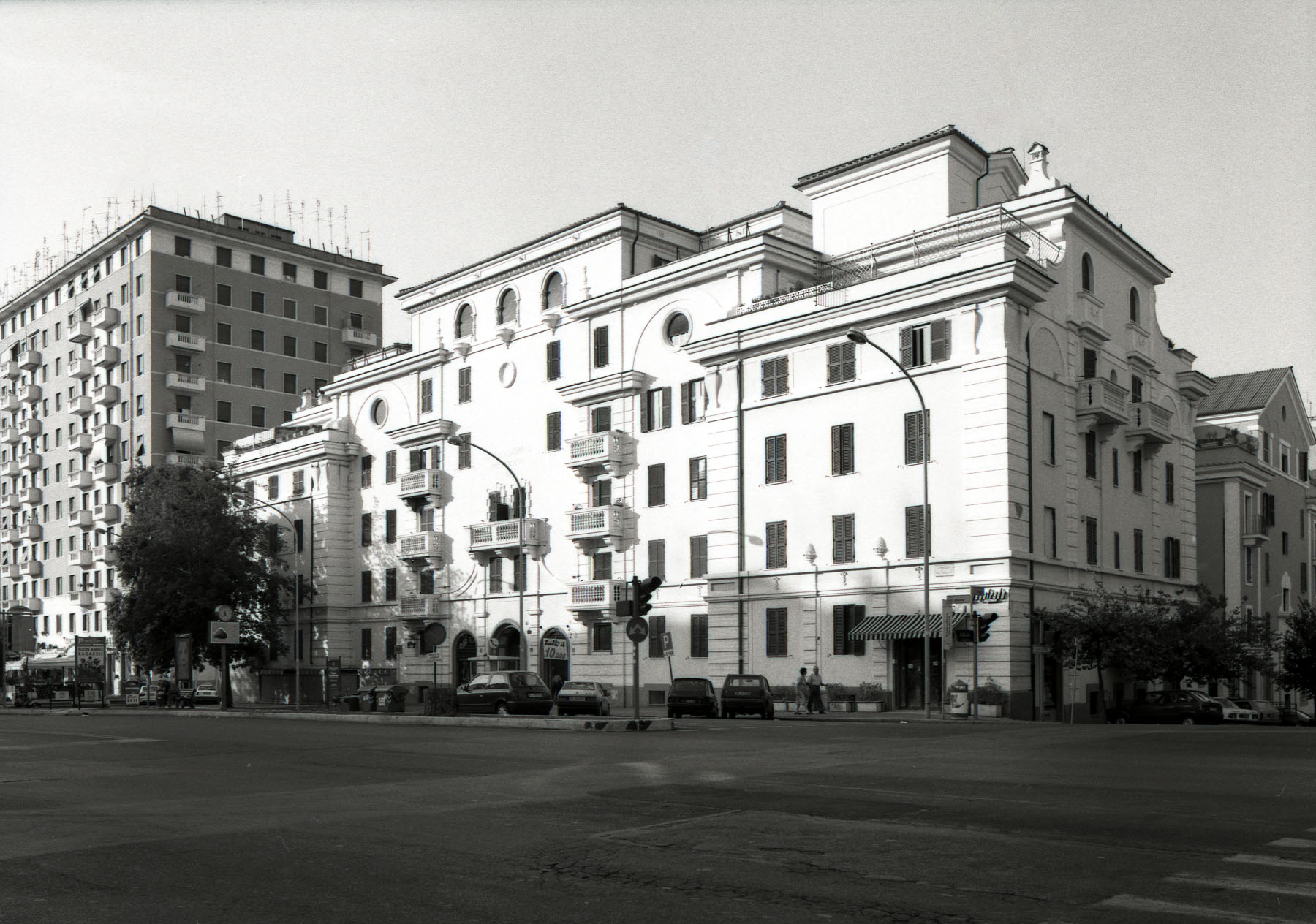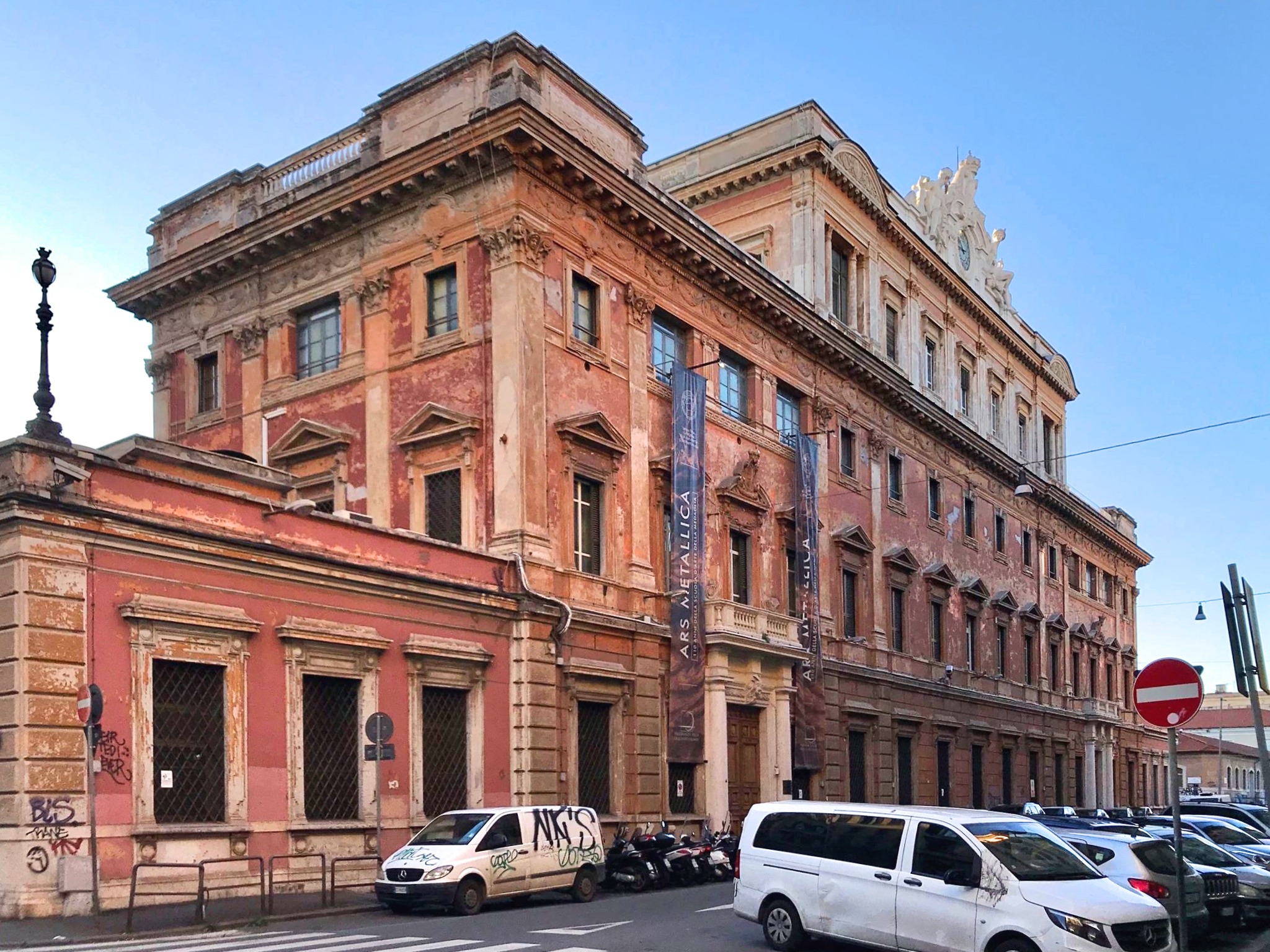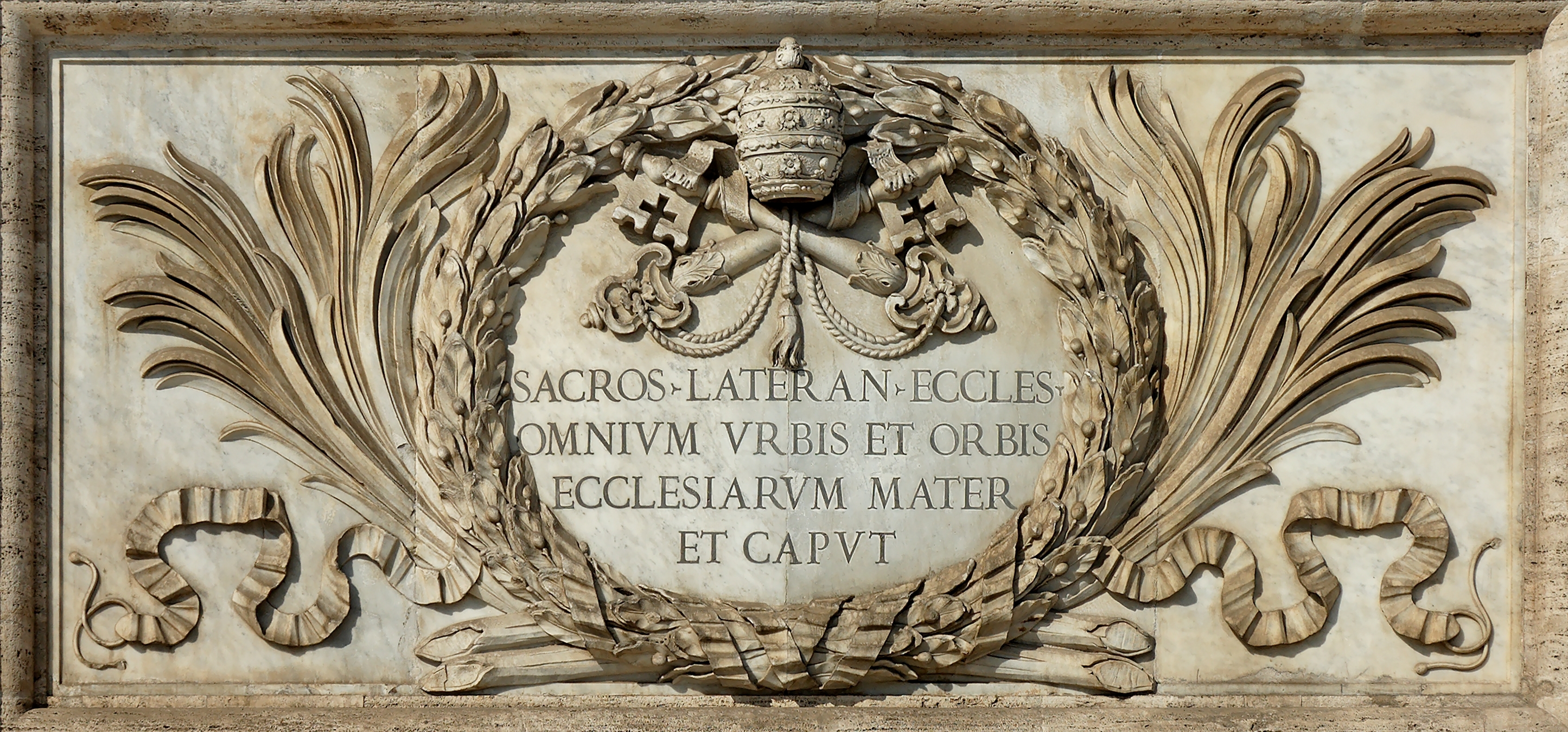|
Tuscolano
Tuscolano is the 8th ''quartiere'' of Rome (Italy), identified by the initials Q. VIII. The name derives from the ancient road Via Tuscolana. It belongs to the Municipio V and Municipio VII. History The origins of the territory - which, as for the landscape, social and cultural aspect is now totally similar to Appio-Latino - can be dated back to the Middle Age, when the road that gave it its name, the Via Tuscolana, was first mentioned in a papal seal Honorius III issued in 1217. The road was built to link Rome with Tusculum but does not seem to have a classical origin: nothing to do with the road has the imperial mausoleum known as ''Monte del Grano'' (which was related to the nearby Roman villa called ''Ad Duas Lauros''), nor do the ''columbaria'' of Via Pescara, which were probably built along a cross street of the Via Labicana. The first archaeological vestige that can be certainly connected to the Via Tuscolana is the ''Torre del Quadraro'', a 12th-century guard tower. ... [...More Info...] [...Related Items...] OR: [Wikipedia] [Google] [Baidu] |
Municipio VII
Municipio Roma VII is the seventh administrative subdivision of the Municipality of Rome (Italy). It was established by the Municipal Assembly, with Resolution nr. 11 of 11 March 2013, following the unification of Municipio Roma IX (formerly ''Circoscrizione IX'') and Municipio Roma X (formerly ''Circoscrizione X''). It is the most populous ''Municipio'' in the city, the only one with more than 300,000 inhabitants. Geography The territory of the ''Municipio'' extends in the south-eastern quadrant of the city, from Porta San Giovanni to the border of the Municipality of Rome, along the road axes of Via Appia Nuova and Via Tuscolana. Its borders are: * to the north-west, the Aurelian Walls; * to the north, the Rome–Cassino–Naples railway, the former Centocelle Airport and the Autostrada A1; * to the east, the Municipalities of Grottaferrata and Frascati; * to the south, Via Appia Nuova and the Municipality of Ciampino; * to the west, the Appian Way Regional Park. Hi ... [...More Info...] [...Related Items...] OR: [Wikipedia] [Google] [Baidu] |
Administrative Subdivision Of Rome
The city of Rome, Italy is divided into first-level administrative subdivisions. There are 15 ''municipi'' (singular: ''municipio'') in the city; each ''municipio'' is governed by a president and a council who are elected directly by its residents every five years. The ''municipi'' collectively comprise the comune of Rome, which is itself one of the constituent parts of the wider metropolitan city of Rome Capital. History On 31 March 1966, for administrative purposes and to increase decentralization, the territory of the ''comune'' of Rome was divided into 12 administrative areas, called ''circoscrizioni'' (singular: ''circoscrizione''). On 11 February 1972 those areas were increased to 20. On 6 March 1992, after the referendum that ratified the separation of the then ''Circoscrizione XIV'' from Rome and the birth of the new independent ''comune'' of Fiumicino, the number of administrative areas of Rome decreased to 19. On 19 January 2001, ''circoscrizioni'' which were renamed ... [...More Info...] [...Related Items...] OR: [Wikipedia] [Google] [Baidu] |
Appio-Latino
Appio-Latino is the 9th ''quartiere'' of Rome (Italy), identified by the initials Q. IX. The name derives from the ancient roads Via Appia and Via Latina. It belongs to the Municipio VII and Municipio VIII. History The origins of the territory can be dated back to the early Roman age. The ancient Via Latina, that gives the name to the quarter, has been an important road axis linking Rome to Old Latium and to Campania and was already used by the Etruscans. The Via Appia, which was called ''longarum Regina viarum'' (i.e. "queen of the long roads") by Caecilius Statius, was built centuries after, in 312 BC. The territory of the quarter is crossed by five imposing aqueducts built between 144 BC and 212 AD: ''Aqua Marcia'', ''Aqua Tepula'' and ''Aqua Iulia'', gathered together within the same structure, ''Aqua Claudia'' and ''Anio Novus'', as well as the ''Aqua Antoniniana'', an offshoot of the ''Aqua Marcia''. The Roman heritage in the area is proved by a system of sumptuous pat ... [...More Info...] [...Related Items...] OR: [Wikipedia] [Google] [Baidu] |
Via Casilina
The Via Casilina is a Middle Ages, medieval road in Latium and Campania. It led from Rome to Casilinum (present-day Capua), to present-day Santa Maria Capua Vetere. It was created from the fusion of two ancient Roman roads, the ''Via Latina'' and the ''Via Labicana''. The Via Labicana led from Rome to ''Labicum'', while the Via Latina ended at Capua. In the Middle Age, Capua was depopulated and the main settlement shifted to ''Casilinum'', formerly a mere fluvial port. This is also the location of the modern town of Capua. As a consequence, the union of the ''Via Latina'' and of the ''Via Labicana'' took on the new namesake of ''Via Casilina''. This usage also survives for the modern road, while ''Via Latina'' is not used anymore. Itinerary Current route The current route of the state road Via Casilina leaves the Porta Maggiore in Rome and, entering the Roman countryside, first runs through the valley of the Sacco (river) , river Sacco, crossing Frosinone, and then the Liri, L ... [...More Info...] [...Related Items...] OR: [Wikipedia] [Google] [Baidu] |
Prenestino-Labicano
Prenestino-Labicano is the 7th ''quartiere'' of Rome (Italy), identified by the initials Q. VII. The name derives from the ancient roads Via Prenestina and Via Labicana, today the initial stretch of Via Casilina. It belongs to the Municipio V and Municipio VII. History Prenestino-Labicano is among the first 15 quarters of the city, which were born in 1911 and were officially established in 1921. In 1961 its territory was split in two parts, and the portion between Viale della Primavera and Viale Palmiro Togliatti became the new ''quartiere'' Prenestino-Centocelle (Q. XIX). Geography The ''quartiere'' is located in the eastern part of Rome, just behind the Aurelian Walls and Porta Maggiore. The territory of Prenestino-Labicano includes the urban zones 6A ''Torpignattara'', 6B ''Casilino'', and 6D ''Gordiani''. Boundaries To the north, the quarter borders with ''Quartiere'' Tiburtino (Q. VI), from which it is separated by the stretch of Via Prenestina between Piazzale Labic ... [...More Info...] [...Related Items...] OR: [Wikipedia] [Google] [Baidu] |
Esquilino (rione Of Rome)
Esquilino is the 15th ''rione'' of Rome, identified by the initials R. XV, and is Located within the Municipio I. It is named after the Esquiline Hill, one of the Seven Hills of Rome. Its coat of arms bears two figures: a tree and three green mountains, all on a silver background. It is a very cosmopolitan neighbourhood, with large numbers of immigrants from Asia and North Africa. History Esquilino is part of the historic center of Rome, where urbanization developed in ancient times. Along with ''Palatina'', ''Collina'' and ''Suburana'', the area was one of the four ''regiones'' established by Servius Tullius: until Emperor Augustus adopted a new administrative subdivision of the city, the region included the whole area that is part of the modern ''rione'' Monti. The territory of the modern ''rione'' Esquilino, however, has always been regarded as the frontier of the inner city. Initially at the edge of the Servian Wall, whose '' agger'' was located in the area, during the ... [...More Info...] [...Related Items...] OR: [Wikipedia] [Google] [Baidu] |
Quarters Of Rome
The Quarters of Rome (Italian: ''quartieri di Roma'') are the areas in and around the Italian city of Rome which became urbanised after the foundation of the last city-centre rione, Prati. They form the second level of administrative sub-divisions of Roma Capitale. Together they cover 171.38 km2 and hold 1483913 inhabitants. History The first 15 quarters were officially founded and numbered in 1926, after first being drafted in 1911. As of 1930 there were two more unofficial quarters: the quarter XVI, which was called Città Giardino Aniene in 1924; and the quarter XVII, that was named Savoia in 1926. These two were later officially renamed, the XVII becoming ''Trieste'' in 1946 and the XVI becoming ''Monte Sacro'' in 1951. Other quarters have been renamed: the quarter XV, previously called Milvio, became ''Della Vittoria'' in 1935, while the III, once known as Vittorio Emanuele III in honor of the King of Italy, was renamed ''Pinciano'' in 1946. In 1961, Delibera del Com ... [...More Info...] [...Related Items...] OR: [Wikipedia] [Google] [Baidu] |
1122
Year 1122 ( MCXXII) was a common year starting on Sunday (link will display the full calendar) of the Julian calendar. Events By place Byzantine Empire * Battle of Beroia: Emperor John II Komnenos transfers the Byzantine field army from Asia Minor (where it has been engaged against the Seljuk Turks) to the Balkans. The Pechenegs who have set up their camp (defended by a circular formation of wagons) near Beroia (modern Bulgaria) are defeated. John orders the Varangian Guard (some 480 men), the elite Palace Guard to hack their way through the Pecheneg circle of wagons, causing a general rout in their camp. Pecheneg survivors are taken captive and enlisted into the Byzantine army. Levant * September 13 – Count Joscelin I and Waleran of Le Puiset are taken prisoner by Turkish forces led by Belek Ghazi near Saruj in northern Syria. Belek offers Joscelin liberty in return for the cession of Edessa. He refuses to accept these terms; Joscelin and Waleran and 60 o ... [...More Info...] [...Related Items...] OR: [Wikipedia] [Google] [Baidu] |
Liber Pontificalis
The ''Liber Pontificalis'' (Latin for 'pontifical book' or ''Book of the Popes'') is a book of biographies of popes from Saint Peter until the 15th century. The original publication of the ''Liber Pontificalis'' stopped with Pope Adrian II (867–872) or Pope Stephen V (885–891), but it was later supplemented in a different style until Pope Eugene IV (1431–1447) and then Pope Pius II (1458–1464). Although quoted virtually uncritically from the 8th to 18th centuries, the ''Liber Pontificalis'' has undergone intense modern scholarly scrutiny. The work of the French priest Louis Duchesne (who compiled the major scholarly edition), and of others has highlighted some of the underlying redactional motivations of different sections, though such interests are so disparate and varied as to render improbable one popularizer's claim that it is an "unofficial instrument of pontifical propaganda." The title ''Liber Pontificalis'' goes back to the 12th century, although it only became c ... [...More Info...] [...Related Items...] OR: [Wikipedia] [Google] [Baidu] |
Pope Callixtus II
Pope Callixtus II or Callistus II ( – 13 December 1124), born Guy of Burgundy, was head of the Catholic Church and ruler of the Papal States from 1 February 1119 to his death in 1124. His pontificate was shaped by the Investiture Controversy, which he was able to settle through the Concordat of Worms in 1122. As son of Count William I of Burgundy, Guy was a member of and connected to the highest nobility in Europe. He became archbishop of Vienne and served as papal legate to France. He attended the Lateran Synod of 1112. He was elected pope at Cluny in 1119. The following year, prompted by attacks on Jews, he issued the bull '' Sicut Judaeis'' which forbade Christians, on pain of excommunication, from forcing Jews to convert, from harming them, from taking their property, from disturbing the celebration of their festivals, and from interfering with their cemeteries. In March 1123, Calixtus II convened the First Lateran Council which passed several disciplinary decrees, such as ... [...More Info...] [...Related Items...] OR: [Wikipedia] [Google] [Baidu] |
Via Tuscolana
Via or VIA may refer to the following: Science and technology * MOS Technology 6522, Versatile Interface Adapter * ''Via'' (moth), a genus of moths in the family Noctuidae * Via (electronics), a through-connection * VIA Technologies, a Taiwanese manufacturer of electronics * Virtual Interface Adapter, a network protocol * Virtual Interface Architecture, a networking standard used in high-performance computing Education * VIA Vancouver Institute for the Americas, an organization dedicated to education for sustainable development, since 1998 operating in Canada * VIA University College, a university college (Danish: professionshøjskole), since 2008 established in Denmark * VIA, Association of Information Sciences (Dutch: VIA Vereniging Informatiewetenschappen Amsterdam), at the University of Amsterdam, in the Netherlands Transportation * The name for a Roman road, e.g., ''Via Appia'' * VIA was the ICAO airline designator for Venezuelan airline Viasa (1960-1977) * VIA Metr ... [...More Info...] [...Related Items...] OR: [Wikipedia] [Google] [Baidu] |
Saint John Lateran
The Archbasilica Cathedral of the Most Holy Savior and of Saints John the Baptist and John the Evangelist in the Lateran ( it, Arcibasilica del Santissimo Salvatore e dei Santi Giovanni Battista ed Evangelista in Laterano), also known as the Papal Archbasilica of Saint John nLateran, Saint John Lateran, or the Lateran Basilica, is a Catholic cathedral church of the Diocese of Rome in the city of Rome, and serves as the seat of the bishop of Rome, the pope. The archbasilica lies outside of Vatican City proper, which is located approximately to the northwest. Nevertheless, as properties of the Holy See, the archbasilica and its adjoining edifices enjoy an extraterritorial status from Italy, pursuant to the terms of the Lateran Treaty of 1929. The church is the oldest and highest ranking of the four major papal basilicas as well as one of the Seven Pilgrim Churches of Rome, holding the unique title of "archbasilica". Founded in 324, it is the oldest public church in the city of Ro ... [...More Info...] [...Related Items...] OR: [Wikipedia] [Google] [Baidu] |




